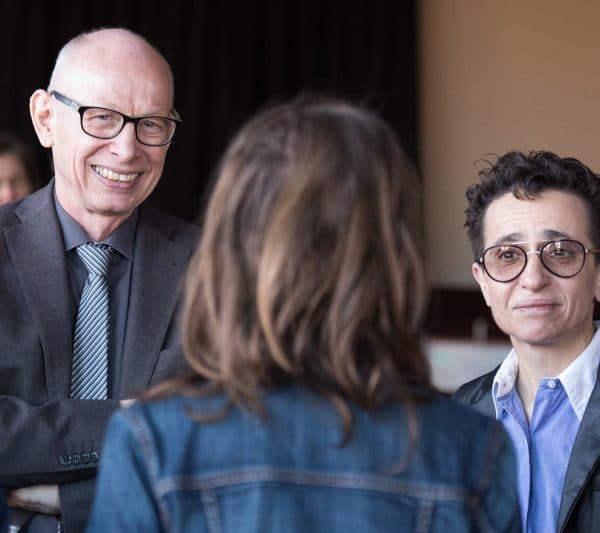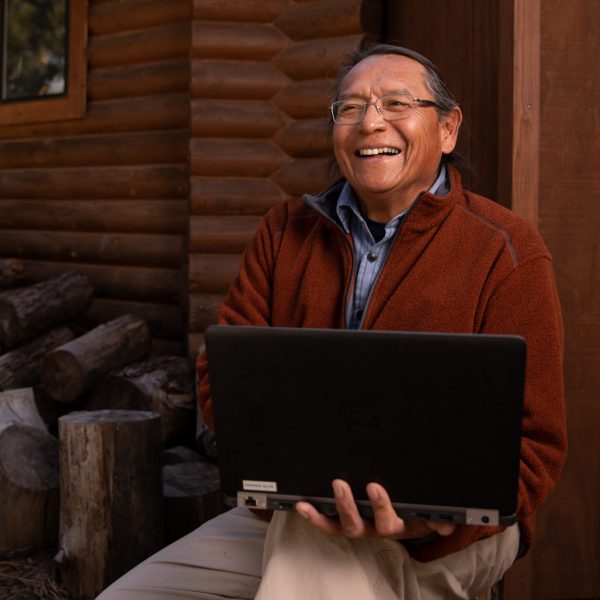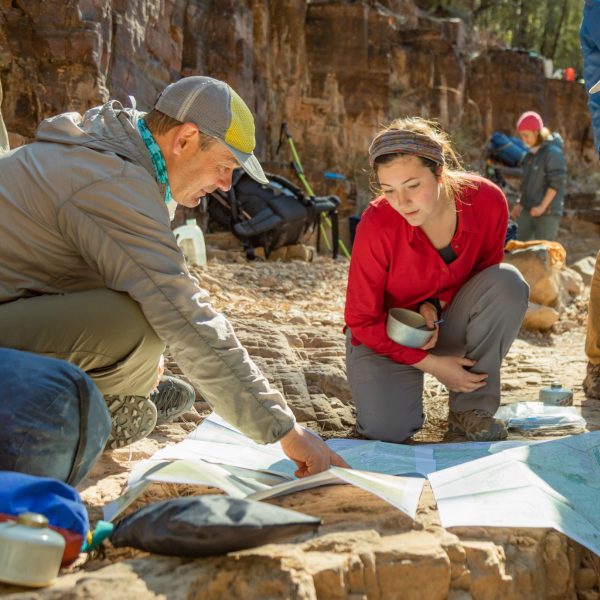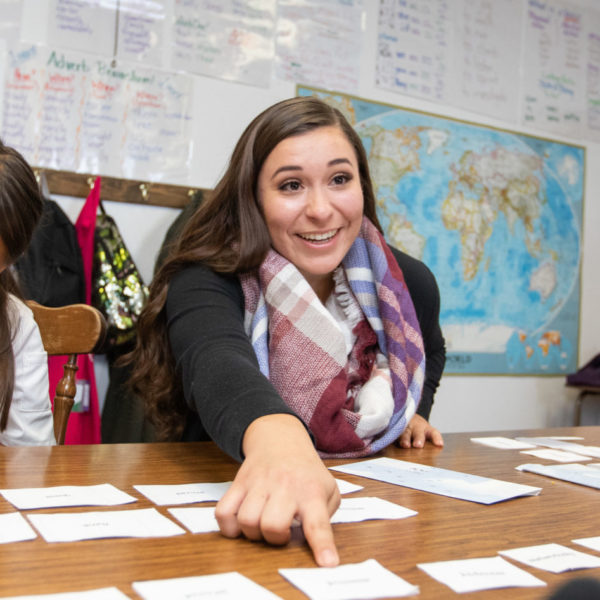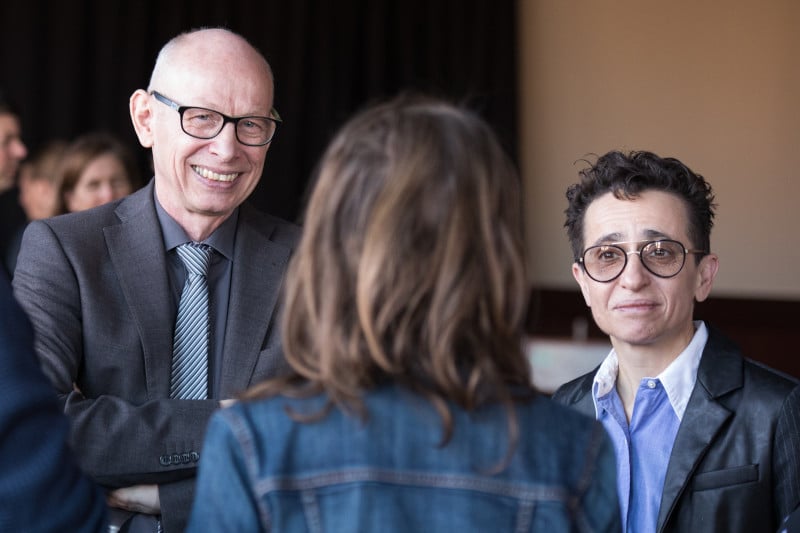
Regents’ Professor and Martin-Springer Institute Director Björn Krondorfer inspires his students with multi-layered learning.
Whether traveling to a Bedouin village in Israel, developing a traveling exhibit, or publishing a book, Northern Arizona University students who embark on a Martin-Springer Institute project with Björn Krondorfer encounter a distinctive learning experience.
The institute’s dual mandate is clearly stated in its phrase, “global engagement through Holocaust awareness.” Under Krondorfer’s directorship, the Flagstaff campus and community have an opportunity to relate the experiences of the Holocaust to today’s concerns, crises, and conflicts.
This approach links past and present and promotes values such as moral courage, tolerance, and reconciliation that cross disciplinary boundaries. Such purpose-driven work attracts students from across the NAU campus. Institute projects benefit from the students’ diverse skills and interests, and students gain empathy for their peers and the larger world, no matter what their career goals are.
Teamwork challenges students to grow
“It is personally gratifying to work with students simultaneously on different levels of learning,” Krondorfer said. “A collaborative spirit and learning happen on the factual and research level, but often involve group dynamics. You have to learn how to work with people’s personalities. In a team, that is very important.”
The institute offers applied, transdisciplinary research opportunities outside a traditional class structure: “We don’t follow a cookie-cutter model. It’s whatever seems right for a project,” said Krondorfer, who is also an Endowed Professor of Religious Studies in the Department of Comparative Cultural Studies.
Most students are drawn by an initial interest but usually come without much background. But they leave with a lot of knowledge.
Students contribute their respective strengths to help complete the projects. Education students brainstorm resources to accompany a website. Students in history and gender studies research and conduct interviews. Graphic design students find common ground with computer science students on coding and presentation.
“Expertise that people bring from their background is what we need,” said Krondorfer. “They learn from each other what is doable and appreciate how much time it takes to do a project well.”
Projects generally last up to two semesters. Previous projects include:
- An exhibit and website about a Jewish ghetto in Poland during World War II, Through the Eyes of Youth: Life and Death in the Będzin Ghetto, which has been translated into Polish and shown in Sosnowiec, Poland. This exhibit will travel to the Holocaust and Genocide Museum in Johannesburg, South Africa.
- The international exhibit, Echoes of Loss: Artistic Responses to Trauma that followed on the heels of a corresponding museum studies/art history course Krondorfer taught at NAU and is another example of the institute working across disciplines and blending academic and applied work.
- NAU students researched Resilience: Women in Flagstaff’s Past and Present with the Institute and the Arizona Historical Society. The exhibit was shown at Flagstaff City Hall.
Student teams meet one evening a week, often over pizza, to assess what is and isn’t working and plot out their next tasks. “We guide them,” Krondorfer said, “but the students are very much in charge. Most students are drawn by an initial interest but usually come without much background. But they leave with a lot of knowledge.”
“Björn challenged me to develop my own perspective and ideas about the topics in question,” said Noemi Uribe, who graduated with a bachelor’s degree in Public Health. “Institute projects allowed me to have a voice and to feel confident and comfortable sharing. As a first-generation college student, this allowed me to feel comfortable asking as many questions as I could.”
Engaging locally and globally
Recently, Krondorfer, Uribe, and eight other NAU students took part in an 18-day, two-continent course titled “Borders, Identities, Social Repair: Majority Cultures and Indigenous Lives in Arizona and Israel.” They traveled to southern Israel and then to northern Arizona with Israeli students from Ben Gurion, a university in the Negev that houses the Martin-Springer Center for Conflict Studies. They re-examined social justice and diversity within a challenging and caring cohort that included Bedouin, Navajo, and White Mountain Apache students.
“You begin to see your own country through the eyes of the other group,” Krondorfer said. “The Israelis got defensive when the American students gave them feedback on what they experienced. The Americans were surprised when they heard what the Israelis had to say. What we take for granted, a newcomer doesn’t. They make you aware of things. We say, ‘No, no, that’s normal,’ and the other says, ‘Why do you think that’s normal? It’s not.’”
Carefully layered learning approaches led to deeper discoveries and corrected misconceptions on everything from poverty and resilience to land appropriation and historical tensions. Academic readings and lectures were mixed with experiential learning through visits to a kibbutz, the Hopi Mesas, and Bedouin villages in Israel.
“Whatever is said in a society at large is probably reflected within our own group, so we get students to talk about their own religions and life experiences,” Krondorfer said. “Our premise was that we come from different backgrounds, we have different social identities. And even though we get the same information, either visually or by listening to an academic talk, we might process it differently and hear different things. That’s a truism in certain ways, but students don’t necessarily realize that at their age. To get them to understand that a fact is not just a fact, but can be interpreted differently based on your community’s experience, that’s what the program was about.”
“I saw the cultural exchange program as a once-in-a-lifetime experience to not only go abroad but to also learn once again with Björn,” Uribe said. “Because I felt comfortable with Björn and had a good relationship with him, it didn’t matter what he was teaching or embarking on, I wanted to be a part of it—I knew I would be challenged to learn something new and different.”
Acknowledging the emotional aspect of learning is important to Krondorfer. He cites an example from the Będzin exhibit, where the student team had gathered materials of more Jewish youth than the exhibit space allowed to include. “To cut down the number of people was emotional, not just because we invested our time, but we had brought back to life the tragedy of a person,” he said. “To decide whom to include and whom to leave out, it’s almost like putting this person to death a second time. It’s not just a factual, pragmatic, knowledge-based decision. It can be an emotional decision. That’s why I like to work with students in a very personal and intensive way.”

